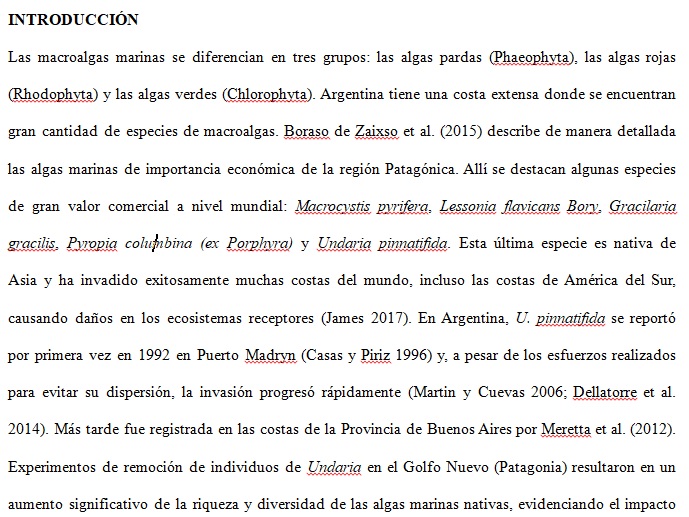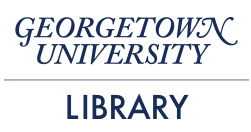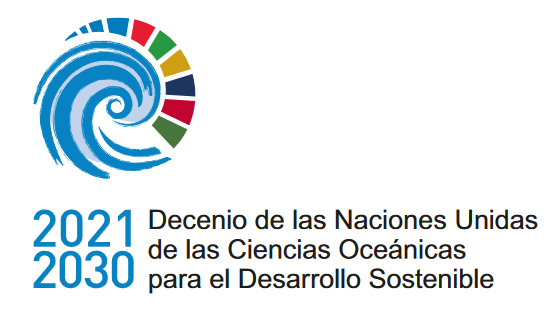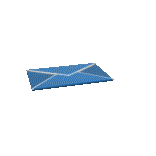Potencialidades de las macroalgas marinas argentinas
DOI:
https://doi.org/10.47193/mafis.3222019121907Palabras clave:
algas marinas, alimento saludable, biosorción, nutraceútico, biocombustible, fertilizanteResumen
En la extensa costa argentina se encuentran numerosas especies de macroalgas de importancia a nivel mundial. En el presente trabajo se debaten los estudios más relevantes publicados hasta la fecha sobre los usos de las algas marinas y se mencionan las investigaciones argentinas con el objetivo de evaluar el estado de conocimiento del recurso. La revisión muestra que en nuestro país se publicaron numerosos trabajos que evidencian el valor de las algas en la alimentación humana y animal, en la producción de compuestos químicos beneficiosos para la salud y en aplicaciones ambientales. Sin embargo, ciertas áreas tales como el desarrollo de biocombustibles y el uso en el campo de la agricultura revelan la necesidad de profundizar en la investigación. Se concluye que las algas marinas argentinas, además de tener numerosas aplicaciones, son un recurso con gran potencial de explotación comercial para beneficio de las poblaciones costeras.
Descargas
Métricas
Citas
Afonso C, Cardoso C, Ripol A, Varela J, Quental-Ferreira H, Pousao-Ferreira P, Ventura MS, Delgado IM, Coelho I, Castanheira I, Bandarra NM. 2018. Composition and bioaccessibility of elements in Green seaweeds from fish pond aquaculture. Food Res Int. 105: 271-277.
Aitken D, Balboa C, Godoy-Faundez A, Turrion-Gomez JL, Antizar-Ladislao B. 2014. Life cycle assessment of macroalgae cultivation and processing for biofuel production. J Clean Prod. 75: 45-56.
Alencar POC, Lima GC, Barros FCN, Costa LEC, Ribeiro CVPE, Sousa WM, Sombra VG, Abreu CMWS, Abreu ES, Pontes EOB, et al. 2019. A novel antioxidant sulfated polysaccharide from the algae Gracilaria caudata: In vitro and in vivo activities. Food Hydrocoll. 90: 28-34.
Areco MM, dos Santos Afonso M. 2010. Copper, zinc, cadmium and lead biosorption by Gymnogongrus torulosus. Thermodynamics and kinetics studies. Colloids Surf. B: Biointerfaces. 81: 620-628.
Areco MM, Hanela S, Duran J, dos Santos Afonso M. 2012. Biosorption of Cu(II), Zn(II), Cd(II) and Pb(II) by dead biomasses of green alga Ulva lactuca and the development of a sustainable matrix for adsorption implementation. J Hazard Mater. 213-214: 123-132.
Alves RN, Maulvault AL, Barbosa VL, Fernandez-Tejedor M, Tediosi A, Kotterman M, van del Heuvel FHM, Robbens J, Fernandes JO, Rasmussen RR, et al. 2018. Oral bioaccessibility of toxic and essential elements in raw and cooked commercial seafood species available in European markets. Food Chem. 367: 15-27.
Amin MHA, Xiong C, Glabonjat RA, Francesconi KA, Oguri T, Yoshinaga J. 2018. Estimation of daily intake of arsenolipids in Japan based on a market basket survey. Food Chem Toxicol. 118: 245-251.
Ammar N, Jabnoun-Khiareddine H, Mejdoub-Trabelsi B, Nefzi A, Mahjoub MA, Daami-Remadi M. 2017. Pythium leak control in potato using aqueous and organic extracts from the brown alga Sargassum vulgare (C. Agardh, 1820). Postharvest Biol Technol. 130: 81-93.
Anacleto P, van den Heuvel FHM, Oliveira C, Rasmussen RR, Fernandes JO, Sloth JJ, Barbosa V, Alves RN, Marques A, Cunha SC. 2017. Exploration of the phycoremediation potential of Laminaria digitata towards diflubenzuron, lindane, copper and cadmium in a multitrophic pilot-scale experiment. Food Chem Toxicol. 104: 95-108.
Astorga-España MS, Rodríguez-Galdón B, Rodríguez-Rodríguez EM, Díaz-Romero C. 2016. Aminoacid content in seaweeds from the Magellan Straits (Chile). J Food Compos Anal. 53: 77-84.
Bagda E, Tuzen M, Sari A. 2017. Equilibrium, thermodynamic and kinetic investigations for biosorption of uranium with green algae (Cladophora hutchinsiae). J Environ Radioactiv. 175-176: 7-14.
Balboa EM, Gallego-Fábrega C, Moure A, Dominguez H. 2015. Study of the seasonal variation on proximate composition of oven-dried Sargassum muticum biomass collected in Vigo Ria, Spain. J Appl Phycol. 28 (3): 1943-1953.
Baroni L, Goggi S, Battaglino R, Berveglieri M, Fasan I, Filippin D, Griffith P, Rizzo G, Tomasini C, Tosatti MA, Battino MA. 2019. Vegan nutrition for mothers and children: practical tools for healthcare providers. Nutrients. 11 (5): 1-16.
Basso MC, Cerrella EG, Cukierman. 2002. Empleo de algas marinas para la biosorción de metales pesados de aguas contaminadas. Avances en Energías Renovables y Medio Ambiente. 6 (1): 60-74.
Becherucci ME, Benavides H. 2016. Composición florística de arribazones de algas marinas en playas del sudeste de la provincia de Buenos Aires, Argentina. Iheringia Ser Bot. 71 (1): 1-5.
Bonanno G, Orlando-Bonaca M. 2018. Chemical elements in Mediterranean macroalgae. A review. Ecotox Environ Safe. 148: 44-71.
Boraso de Zaixso, AL, Ciancia M, Cerezo AS, Piriz ML, Casas GN, Eyras MC. 2015. Capítulo 1: Utilización de las macroalgas marinas de la costa argentina y sus hidrocoloides. En: Zaixso HE, Boraso AL, editores. La Zona Costera Patagónica Argentina. Vol. I. Recursos Biológicos Bentónicos. Editorial Universitaria de la Patagonia. Comodoro Rivadavia. Versión digital: 3-60.
Calogero G, Citro I, Di Marco G, Minicante SA, Morabito M, Genovese G. 2014. Brown seaweed pigment as a dye source for photoelectrochemical solar cells. Spectrochim Acta A. 117: 702-706.
Calvo GH, Cosenza VA, Sáenz DA, Navarro DA, Stortz CA, Céspedes MA, Mamone LA, Casas AG, Di Venosa GM. 2019. Disaccharides obtained from carrageenan as potential antitumor agents. Sci Rep. 9 (6654): 1-13.
Camurati JR, Salomone VN. 2019. Arsenic in edible macroalgae: an integrated approach. Journal of Toxicology and Environmental Health, Part B: Critical Reviews. DOI: https://doi.org/10.1080/10937404.2019.1672364
Carnevale B, Blanes P, Sala LF, Bellú SE. 2017. Removal of molybdate anions from contaminated waters by brown algae biomass in batch and continuous processes. J Chem Technol Biotechnol. 92: 1298-1305.
Casas G, Piriz ML. 1996. Survey of Undaria pinnatifida (Laminariales, Phaeophyta) in Golfo Nuevo, Argentina. Hydrobiologia. 326/327: 213-215.
Casas GN, Scrosati R, Piriz ML. 2004. The invasive kelp Undaria pinnatifida (Phaeophyceae, Laminariales) reduces native seaweed diversity in Nuevo Gulf (Patagonia, Argentina). Biol Inv. 6: 411-416.
Chen H, Zhou D, Luo G, Zhang S, Chan J. 2015. Macroalgae for biofuels production: progress and perspectives. Renew Sust Energ Rev. 47: 427-437.
Cheney D, Rajic L, Sly E, Merci D, Sheahan A. 2014. Uptake of PBCs contained in marine sediments by the green macroalga Ulva rigida. Mar Pollut Bull. 88: 207-214.
Cian RE, Bacchetta C, Rossi A, Cazenave J, Drago SR. 2019. Red seaweed Pyropia columbina as antioxidant supplement in feed for cultured juvenile Pacú (Piaractus meso-potamicus). J Appl Phycol. 31: 1455-1465.
Cian RE, Hernández-Chirlaque C, Gámez-Belmonte R, Drago SR, Sánchez de Medina F, Martínez-Augustín O. 2018. Green alga Ulva spp. hydrolysates and their peptide fractions regulate cytokine production in splenic macrophages and lymphocytes the TLR4-NFkB/MAPK pathways. Mar Drugs. 16: 235-249.
Circuncisào AR, Catarino MD, Cardoso SM, Silva AMS. 2018. Minerals from macroalgae origin health benefits and risks for consumers. Mar Drugs. 16: 400-430.
Ciepiela GA, Godlewska A, Jankowska J. 2016. The effect of seaweed Ecklonia maxima extract and mineral nitrogen on fodder grass chemical composition. Environ Sci Pollut R. 23 (3): 2301-2307.
Cofrades S, Benedí J, Garcimartin A, Sánchez-Muñiz FJ, Jimenez-Colmenero F. 2017. A Comprehensive approach to formulation of seaweed-enriched meat products: from technological development to assessment of healthy properties. Food Res Int. 99: 1084-1094.
Cofrades S, López-López I, Bravo L, Ruiz-Capillas C, Bastida S, Larrea MT, Jiménez-Colmenero F. 2010. Nutritional and antioxidant properties of different Brown and red Spanish edible seaweed. Food Sci Technol Int. 16 (5): 361-370.
Cole AJ, Roberts DA, Garside A, de Nys R, Paul NA. 2016. Seaweed compost for agricultural crop production. J Appl Phycol. 28: 629-642.
Craigie JS. 2011. Seaweed extract stimuli in plant science and agriculture. J Appl Phycol. 23 (3): 371-393.
De Corato U, Salimbeni R, De Pretis A, Avella N, Patruno G. 2017. Antifungal activity of crude extracts from brown and red seaweeds by supercritical carbon dioxide technique against fruit postharvest fungal diseases. Postharvest Biol Technol. 131: 16-30.
DeFelice S. 2002. FIM, Rationale and Proposed Guidelines for the Nutraceutical Research and Education Act NREA, Foundation for Innovation in Medicine. http://www.fimdefelice.org/archives/arc.researchact.html.
Dellatorre FG, Amoroso R, Saravia J, Orensanz JM. 2014. Rapid expansion and potential range of the invasive kelp Undaria pinnatifida in the Southwest Atlantic. Aquat Invasions. 9 (4): 467-478.
Deniz F, Karabulut A. 2017. Biosorption of heavy metals ions by chemically modified biomass of coastal seaweed community: Studies on phycoremediation system modeling and design. Ecol Eng. 106: 101-108.
Diana JS, Egna HS, Chopin T, Peterson MS, Cao L, Pomeroy R, Verdegem M, Slack WT, Bondad-Reantaso MG, Cabello F. 2013. Responsible Aquaculture in 2050: Valuing local conditions and human innovations will be key to success. BioScience. 63 (4): 255-262.
Diaz AC, Espino ML, Arzoz NS, Velurtas SM, Ponce NMA, Stortz CA, Fenucci JL. 2017. Free radical scavenging activity of extracts from seaweeds Macrocystis pyrifera and Undaria pinnatifida: applications as functional food in the diet of prawn Artemesia longinaris. Lat Am J Aquat Res. 45 (1): 104-112.
Estevez JM, Ciancia M, Cerezo AS. 2004. The system of galactans of the red seaweed, Kappaphycus alvarezii, with emphasis on its minor constituents. Carbohydr Res. 339: 2575-2592.
Eyras MC, Defosse GE, Dellatorre F. 2008. Seaweed compost as an amendment for horticultural soils in Patagonia, Argentina. Compost Sci Util. 16 (2): 119-124.
Eyras MC, Rostagno CM. 1995. Bioconversión de algas marinas de arribazón: experiencias en Puerto Madryn, Chubut (Argentina). Naturalia Patagónica, ciencias Biológicas. 3: 25-39.
Eyras MC, Sar EA. 2003. Arribazones estivales en Puerto Madryn, Argentina, como materiales para la obtención de compost. Bol Soc Argent Bot. 38 (1-2): 105-111.
Fan X, Guo R, Yuan X, Qiu Y, Yang Z, Wang F, Sun M, Zhao X. 2015. Biogas production from Macrocystis pyrifera biomass in seawater system. Bioresource Technol. 197: 339-347.
[FAO] Organización de las Naciones Unidas para la Alimentación y la Agricultura. 2018. El estado mundial de la pesca y la acuicultura 2018. Cumplir los objetivos de desarrollo sostenible. Roma. Licencia: CC BY-NC-SA 3.0 IGO.
Farías DR, Hurd CL, Eriksen RS, Macleod CK. 2018. Macrophytes as bioindicators of heavy metal pollution in estuarine and coastal environments. Mar Pollut Bull. 128: 175-184.
Farías S, Pérez Arisnabarreta S, Vodopidez C, Smichowski P. 2002. Levels of essential and potentially toxic trace metals in Antarctic macro algae. Spectrochim Acta B. 57: 2133-2140.
Farías S, Smichowski P, Vélez D, Montoro R, Curtosi A, Vodopívez C. 2007. Total and inorganic arsenic in Antartic macroalgae. Chemosphere. 69: 1017-1024.
Flores-Chaparro CE, Chazaro Ruiz LF, Alfaro-De la Torre MA, Huerta-Diaz A, Rangel-Mendez JR. 2017. Biosorption removal of benzene and toluene by three dried macroalgae at different ionic strength and temperatures: algae biochemical composition and kinetics. J Environ Manag. 193: 126-135.
Flores-Chaparro CE, Rodriguez-Hernandez MC, Chazaro-Ruiz LF, Alfaro-De la Torre MA, Huerta-Diaz MA, Rengel-Mendez JR. 2018. Chitosan-macroalgae biocomposites as potential adsorbents of water-soluble hydrocarbons: organic matter and ionic strength effects. J Clean Prod. 197: 633-642.
Gallardo AA, Risso S, Fajardo MA, Belchior SE. 2004. Caracterización de poblaciones microbianas presentes en la macroalga comestible Mosotroma undulatum, Wittrock. Archivos Latinoamericanos de Nutrición. 34 (3): 1-17.
García FE, Plaza-Cazón J, Montesinos VN, Donati ER, Litter MI. 2018. Combined strategy for removal of Reactive Black 5 by biomass sorption on Macrocystis pyrifera and zerovalent iron nanoparticles. J Environ Manage. 207: 70-79.
García-Sartal C, Barciela-Alonso MC, Moreda-Piñeiro A, Bermejo-Barrera P. 2013. Study of cooking on the bioavailability of As, Co, Cr, Cu, Fe, Ni, Se and Zn from edible seaweed. Microchem J. 108: 92-99.
Garriga M, Almaraz M, Marchiaro A. 2017. Determination of reducing sugars in extracts of Undaria pinnatifida (harvey) algae by UV-visible spectrophotometry (DNS method). Actas Ing. 3: 173-179.
Ghadiryanfar M, Rosentrater KA, Kayhani A, Omid M. 2016. A review of macroalgae production, with potential applications in biofuels and bioenergy. Renew Sus Energ Rev. 54: 473-481.
Gil MN, Torres AI, Commendatore MG, Marinho C, Arias A, Giarratamo E, Casas GN. 2015. Nutritive and xenobiotic compounds in the alien algae Undaria pinnatifida from argentine Patagonia. Arch Environ Contam Toxicol. 68: 553-565.
Gil MN, Torres AI, Esteves JL. 2005. Uptake of sewage derived nitrogen by Ulva rigida (Chlorophyceae) in Bahía Nueva (Golfo Nuevo, Patagonia, Argentina). Hydrobiologia. 532: 39-43.
Hardouin K, Bedoux G, Burlot AS, Donnay-Moreno C, Bergé JP, Nyvall-Collén P, Bourgougnon N. 2016. Enzyme-assisted extraction (EAE) for the production of antiviral and antioxidant extracts from the green seaweed Ulva armoricana (Ulvales, Ulvophyceae). Algal Res. 16: 233-239.
James K. 2017. A review of the impacts from invasion by the introduced kelp Undaria pinnatifida. Waikato Regional Council Technical Report 2016/40: 32 p.
Karthick P, Siva Sankar R, Kaviarasan T, Mohanraju. 2012. Ecological implications of trace metals in seaweeds: Bio-indication potential for metal contamination in Wandoor, South Andaman Island. Egyptian J Aquat Res. 38: 227-231.
Ma Z, Lin L, Wu M, Yu M, Shang T, Zhang T, Zhao M. 2018. Total and inorganic arsenic contents in seaweeds: absorption, accumulation, transformation and toxicity. Aquaculture. 497: 49-55.
Makkar HPS, Tran G, Heuzé V, Giger-Reverdin S, Lessire M, Lebas F, DP Ankers. 2016. Seaweeds for livestock diets: a review. Anim Feed Sci Tech. 212: 1-17.
Martin JP, Cuevas JM. 2006. First record of Undaria pinnatifida (Laminariales, Phaeophyta) in Southern Patagonia, Argentina. Biol Invasions. 8: 1399-1402.
Marzocchi M, Badocco D, Plovan A, Pastore P. 2016. Metals in Undaria pinnatifida (Harvey) Suringar and Sargassum muticum (yendo) Fensholt edible seaweeds growing around Venice (Italy). J Appl Phycol. 28: 2605-2613.
Mathew L, Burney M, Gaikwad A, Nyshadha P, Nugent EK, Gonzalez A, Smith JA. 2017. Preclinical evaluation of safety of fucoindan extracts from Undaria pinnatifida and Fucus vesiculosus for use in cancer treatment. Integr Cancer Ther. 16 (4): 572-584.
Mendes Rosa M, Maldonado FL, Marchiaro AB. 2019. Seasonal variation in the chemical composition of seaweed Undaria pinnatifida. Academia J Sci Res. 7 (2): 134-138.
Meretta PE, Matula CV, Casas G. 2012. Occurrence of the alien kelp Undaria pinnatifida (Laminariales, Phaeophyceae) in Mar del Plata, Argentina. Bio Inv Rec. 1 (1): 59-63.
Miedico O, Pompa C, Tancredi C, Cera A, Pellegrino E, Tarallo M, Chiaravalle AE. 2017. Characterisation and chemometric evaluation of 21 trace elements in three edible seaweed species imported from south-east Asia. J Food Comp Anal. 64: 188-197.
Muñoz J. 2015. Informe final: Incorporación de la industria alimentaria de consume humano directo como Fuente de agregación de valor para las macroalgas nacionales. Universidad Arturo Prat. Instituto de Ciencia y Tecnología (ICYT), Puerto Montt, Chile. 411 p.
Muse JO, Carducci CN, Stripeikis JD, Tudino MB, Fernámdez FM. 2006. A link between lead and cadmium kinetic speciation in seawater and accumulation by green alga Ulva lactuca. Environ Pollut. 141: 126-130.
Muse JO, Tudino MB, d`Huicque L, Troccoli OE, Carducci CN. 1989. Atomic Absorption Spectrometric determination of inorganic and organic arsenic in some marine benthic algae of the Southern Atlantic Coast. Environ Pollut. 58: 303-312.
Paz S, Rubio C, Frías I, Gutiérrez AJ, Gonzáles-Weller D, Martín V, Revert C, Hardisson A. 2019. Toxic metals (Al, Cd, Pb and Hg) in the most consumed edible seaweeds in Europe. Chemosphere. 218: 879-884.
Paz S, Rubio C, Gutiérrez AJ, González-Weller D, Revert C, Hardisson A. 2018. Metal concentrations in wild-harvested phaeophyta seaweed from the Atlantic Ocean (Canary Island, Spain). J Food Protect. 81 (7): 1165-1170.
Pérez AA, Farías SS, Strobl AM, Pérez LB, López CM, Piñeiro A, Roses O, Fajardo MA. 2007. Levels of essential and toxic elements in Porphyra columbina and Ulva sp. from San Jorge Gulf, Patagonia Argentina. Sci Total Environ. 376: 51-59.
Pérez AA, Pérez LB, Strobl AM, Camarda S, Farias SS, López CM, Fajardo MA. 2010. Variación estacional de arsénico total en algas comestibles recolectadas en el Golfo San Jorge (Chubut, Argentina). Rev Latinoam Biotecnol Amb Algal. 1 (1): 16-30.
Pérez MJ, Falqué E, Dominguez H. 2016. Antimicrobial action of compounds from marine seaweed. Mar Drugs. 14: 52-90.
Pérez Recalde M, Canelón DJ, Campagnone RS, Matulewicz MC, Cerezo AS, Ciancia M. 2016. Carrageenan and agaran structures from the red seaweed Gymnogongrus tenuis. Carbohyd Polym. 136: 1370-1378.
Piriz ML, Eyras MC, Rostagno CM. 2003. Changes in biomass and botanical composition of beach-cast seaweeds in a disturbed coastal area from Argentine Patagonia. J Appl Phycol. 15 (1): 67-74.
Plaza-Cazón J, Benitez L, Donati E, Viera M. 2012a. Biosorption of chromium(III) by two Brown algae Macrocysits pyrifera and Undaria pinnatifida: Equilibrium and kinetic study. Eng Life Sci. 12 (1): 95-103.
Plaza-Cazón J, Bernardelli C, Viera M, Donati E, Guibal E. 2012b. Zinc and cadmium biosorption by untreated and calcium-treated Macrocystis pyrifera in a batch system. Bioresourse Technol. 116: 195-203.
Plaza-Cazón J, Viera M, Donati E, Guibal E. 2011. Biosorption od mercury by Macrocystis pyrifera and Undaria pinnatifida: influence of zinc, cadmium and nickel. J Environ Sci. 23 (11): 1778-1786.
Plaza-Cazón J, Viera M, Donati E, Guibal E. 2013. Zinc and cadmium removal by biosorption on Undaria pinnatifida in batch and continuous processes. J Environ Manage. 129: 423-434.
Ponce NMA, Flores ML, Pujol CA, Becerra MB, Navarro DA, Córdoba O, Damonte EN, Stortz CA. 2019. Fucoidans from the phaeophyta Scytosipho lomentaria: Chemical analysis and antiviral activity of the galactofucan component. Carbohyd Res. 478: 18-24.
Poo K, Son E, Chang J, Ren X, Choi Y, Chae K. 2018. Biochars derived from wasted marine macro-algae (Saccharina japonica and Sargassum fusiforme) and their potential for heavy metal removal in aqueous solution. J Environ Manage. 206: 364-372.
Rebours C, Marinho-Soriano E, Zertuche-Gonzalez JA, Hayashi L, Vásquez JA, Kradolfer P, Soriano G, Ugarte R, Abreu MH. 2014. Seaweeds: an opportunity for wealth and sustainable livehood for coastal communities. J Appl Phycol. 26: 1939-1951.
Rodrigues D, Freitas AC, Pereira L, Rocha-Santos TAP, Vasconcelos MW, Roriz M, Rodríguez-Alcalá LM, Gomes AMP, Duarte AC. 2015. Chemical composition of red, brown and green macroalgae from Buarcos bay in Central West Coast of Portugal. Food Chem. 183: 197-207.
Rodríguez-Sánchez RA, Canelón DJ, Cosenza VA, Fissore EN, Gerschenson LN, Matulewicz MC, Ciancia M. 2019. Gracilariopsis hommersandii, a red seaweed, source of agar and sulfated polysaccharides with unusual structures. Carbohyd Polym. 213: 138-146.
Rubio C, Napoleone G, Luis-González G, Gutiérrez AJ, González-Weller D, Hardisson A, Revert C. 2017. Metals in edible seaweed. Chemosphere. 173: 572-579.
Salomone VN, Riera M. 2019. Proximal composition of Undaria pinnatifida from San Jorge Gulf (Patagonia, Argentina). Biol Trace Elem Res. DOI: https://doi.org/10.1007/s12011-019-01905-1
Salomone VN, Riera M, Cerchietti L, Custo G, Muniain C. 2017. Seasonal determination of trace and ultra-trace content Macrocystis pyrifera from San Jorge Gulf (Patagonia) by Total Reflection X-ray Fluorescence. Spectrochim Acta B. 131: 74-78.
Sanjeewa KKA, Kang N, Ahn G, Jee Y, Kim Y, Jeon Y. 2018. Bioactive potentials of sulfated polysaccharides isolated from brown seaweed Sargassum spp in related to human health applications: a review. Food Hydrocoll. 81: 200-208.
Schmid M, Kraft LGK, van del Loos LM, Kraft GT, Virtue P, Nichols PD, Hurd CL. 2018. Southern Australian seaweed: a promising resource for omega-3 fatty acids. Food Chem. 265: 70-77.
Skirzypczyk VM, Hermon KM, Norambuena F, Turchini GM, Keast R, Bellgrove A. 2019. Is Australian seaweed worth eating? Nutritional and sensorial properties of wild-harvested Australian versus commercially available seaweeds. J Appl Phycol. 31 (1): 709-724.
Taboada MC, Millán R, Miguez MI. 2013. Nutritional value of the marine algae wakame (Undaria pinnatifida) and nori (Porphyra purpurea) as food supplements. J Appl Phycol. 25: 1271-1276.
Taylor V, Goodale B, Raab A, Schwerdtle T, Reimer K, Conklin S, Karagas MR, Francesconi KA. 2017. Human exposure to organic arsenic species from seafood. Sci Total Environ. 580: 266-282.
Taylor VF, Jackson BP. 2016. Concentrations and speciation of arsenic in New England seaweed species harvested for food and agriculture. Chemosphere. 163: 6-13.
Torres ML, Fernandez JM, Dellatorre FG, Cortizo AM, Oberti TG. 2019. Purification of alginate improves its biocompatibility and eliminates cytotoxicity in matrix for bone tissue engineering. Algal Res. 40. DOI: https://doi.org/10.1016/j.algal.2019.101499
Torres AI, Gil MN, Esteves JL. 2004. Nutrient uptake rates by the alien alga Undaria pinnatifida (Phaeophyta) (Nuevo Gulf, Patagonia, Argentina) when exposed to diluted sewage effluent. Hydrobiologia. 520: 1-6.
Vieira BRC, Pintor AMA, Bonaventura RAR, Botelho CMS, Santos SCR. 2017. Arsenic removal from water using iron-coated seaweed. J Environ Manage. 192: 224-233.
Walls AM, Kennedy R, Edwards MD, Johnson MP. 2017. Impact of kelp cultivation on the Ecological Status of benthic habitats and Zostera marina seagrass biomass. Mar Pollut Bull. 123: 19-27.
Zhou Q, Zhang J, Pu J, Shi J, Jiang G. 2008. Biomonitoring: an appealing tool for assessment of metal pollution in the aquatic ecosystem. Anal Chim Acta. 606: 135-150.

Publicado
Cómo citar
Número
Sección
Licencia
Derechos de autor 2020 Julieta R. Camurati, Julieta Hocsman, Vanesa N. Salomone

Esta obra está bajo una licencia internacional Creative Commons Atribución-NoComercial-CompartirIgual 4.0.
Los autores de los artículos publicados en Marine and Fishery Sciences conservan los derechos de autor de sus artículos, a excepción de las imágenes de terceros y otros materiales añadidos por Marine and Fishery Sciences, que están sujetos a los derechos de autor de sus respectivos propietarios. Por lo tanto, los autores son libres de difundir y volver a publicar sus artículos, sujeto a los requisitos de los propietarios de derechos de autor de terceros y sujeto a que la publicación original sea completamente citada. Los visitantes también pueden descargar y reenviar artículos sujetos a los requisitos de citas. La capacidad de copiar, descargar, reenviar o distribuir cualquier material siempre está sujeta a los avisos de derechos de autor que se muestran. Los avisos de copyright deben mostrarse de manera prominente y no pueden borrarse, eliminarse u ocultarse, total o parcialmente. El autoalmacenamiento en servidores y repositorios de preimpresión está permitido para todas las versiones.
Esta revista ofrece a los autores una política de acceso abierto. Los usuarios pueden leer, descargar, copiar, distribuir, imprimir, buscar o vincular los textos completos de los artículos, o usarlos para cualquier otro propósito legal dentro de la licencia Creative Commons 4.0 (BY-NC-SA), sin solicitar permiso previo del editor o del autor. Esto está de acuerdo con la definición BOAI de acceso abierto.



























